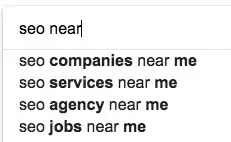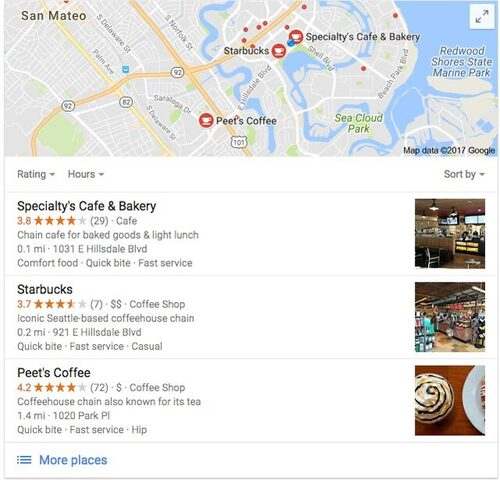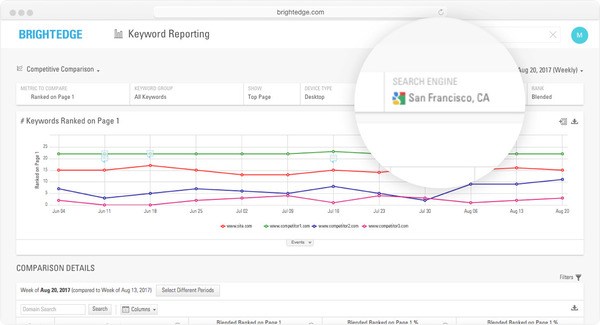An incredible 50% of local mobile searches will lead to store visits within one day, and 18% of those searches will result in a purchase within that same timeframe. The power of local search optimization to reach customers with the information they want and entice them to try particular local businesses cannot be understated. We have reached a point of near complete digital penetration in the United States. Seventy-seven percent of American adults now own a smartphone - more than double since 2011 - and they use these devices on a regular basis.
Americans now spend an average of 5 hours a day on their devices, and one in ten report that they are "smartphone dependent", meaning that their devices are their primary source of internet access. With nearly every prospective customer for your business now online, the majority of them via mobile device, the era of hyperlocalization and the ultimate personalization has begun. Research indicates that a full 57% of traffic now arrives from mobile devices - a rapid rise considering that mobile only overtook desktop in 2015 - and it shows no sign of slowing down. Customers read and take advantage of what people post online. Retailers estimate that 82% of customers will research products online before making an in-store purchase and 60% of people report that they have used information from local ads. Content created and optimized for local search will be digested and produce strong returns when it is created appropriately and delivered to customers at precisely the right moment.
The key for digital marketers who want to compete in this space is understanding how to speak to customers in their moment of need. They must have a precise understanding of their audience and what they want to see - not just data from the nearest major city - and use that information to generate campaigns that target the micro-moments of consumers on a hyperlocal and hyper-personalized level.
The latest trends in local search optimization
As we already mentioned, mobile search has overtaken desktop. Customers also use their mobile devices for about 5 hours per day, which includes time spent learning about local businesses and finding information about their products and services. Given the rapid rates of smartphone and tablet adoption, along with the rapid increase of mobile searches over desktop, mobile search has begun to drive a considerable amount of marketing innovation and strategy. A large part of mobile strategy also overlaps with local search as customers use their devices to answer their questions and address their needs as they move around their location. This has led to the rise of various trends in consumer behavior and changes in the Google SERPs that marketers must understand to craft an effective location search optimization strategy.
Understanding the role of the micro-moment
For the past few years, Google has been pushing marketers towards the particular classifications of user intent that they have termed, “micro-moments”. These moments categorize the four main types of queries as categorized by Google:
- I-want-to-buy micro-moment
- I-want-to-do micro-moment
- I-want-to-know micro-moment
- I-want-to-go micro-moment
Google believes that the vast majority of the queries it sees each day fall into one of these categories. It uses this understanding of user intent to adjust the SERP layout accordingly. Google will often include the local-3 pack on the I-want-to-go micro-moment searches, the I-want-to-know micro-moment might include a Quick Answer at the top of the page while the I-want-to-do micro-moment has YouTube videos or step by step instructions depending upon how the search engine interprets the intent. These changes help Google match their users faster with the content they need. In local search optimization, brands need to understand how Google’s emphasis on the micro-moment impacts their content’s ranking and how user intent impacts behavior on the SERP. For example, customers making local mobile searches often look for quick information, such as contact information or phone numbers for the local business. Creating content that emphasizes these particular types of information allows brands to better serve the needs of these users, and thus draw more traffic and engagement from the site visitors. For brands to effectively use local search optimization, therefore, they must be willing to perform the needed research about their targeted keywords to see the likely user intent, as Google understands it, and then begin to create and optimize their content accordingly.
The trend towards hyperlocal
 Since 2014, there has been a dramatic increase in the number of "near me" queries on Google. Customers have realized the value of using their mobile devices to find businesses in their exact vicinity and they have been using it at an increasing pace. This has corresponded with a rise in hyperlocal targeting. In hyperlocal marketing, businesses work to reach out to customers based on their exact needs when they are in a precise location. It is not about helping prospects find a pizza parlor within a particular city, it is about helping them find the highest rated pizza parlor that is physically closest to them. To accomplish this, brands need to use a combination of both paid search and organic search to create a presence for those precise customers. They need to have data insights and understanding that relate to their users within exact physical locations. To better accommodate these hyperlocal targeted searches, Google has also been looking for ways to further refine their SERP. Not only do listings change in the local 3-pack depending upon the exact physical location of the user, but there are also generally options to filter the results to help the user find a more exact match for what they seek. This allows consumers to filter based on criteria such as ratings or hours to help them find the locations that best meet their needs. For brands to effectively use hyperlocal targeting, they need to put in the effort to make sure that their content has been pre-optimized and marked up so that it will appear in as many of the filters as possible. They need to also make sure that if they have more than one physical location that each one has representation in Google My Business. This will maximize their chances of showing up in hyperlocal searches for all of their locations instead of being restricted to prospects near their main address.
Since 2014, there has been a dramatic increase in the number of "near me" queries on Google. Customers have realized the value of using their mobile devices to find businesses in their exact vicinity and they have been using it at an increasing pace. This has corresponded with a rise in hyperlocal targeting. In hyperlocal marketing, businesses work to reach out to customers based on their exact needs when they are in a precise location. It is not about helping prospects find a pizza parlor within a particular city, it is about helping them find the highest rated pizza parlor that is physically closest to them. To accomplish this, brands need to use a combination of both paid search and organic search to create a presence for those precise customers. They need to have data insights and understanding that relate to their users within exact physical locations. To better accommodate these hyperlocal targeted searches, Google has also been looking for ways to further refine their SERP. Not only do listings change in the local 3-pack depending upon the exact physical location of the user, but there are also generally options to filter the results to help the user find a more exact match for what they seek. This allows consumers to filter based on criteria such as ratings or hours to help them find the locations that best meet their needs. For brands to effectively use hyperlocal targeting, they need to put in the effort to make sure that their content has been pre-optimized and marked up so that it will appear in as many of the filters as possible. They need to also make sure that if they have more than one physical location that each one has representation in Google My Business. This will maximize their chances of showing up in hyperlocal searches for all of their locations instead of being restricted to prospects near their main address.
Understanding the local SERP
To understand local search optimization, businesses must also understand how Google constructs their SERP for searches with local intent. Google consistently runs to test to match their SERP with user intent and to make sure they display the desired information to their users. This means that paying attention to what Google focuses on can provide considerable insight into how organizations can maximize their return from their own efforts. On the local 3-pack, for example, Google looks to include information such as ratings, a brief description, and the address. As already discussed, users can then filter their results by factors such as prices or ratings. Google has selected these criteria to display in their local 3-pack because they have found people consistently want to find addresses for businesses to help them determine their proximity to particular options. Not only should this indicate the importance of filling out the Google My Business profile completely, but it should also impact how you construct the rest of the content you produce for the local SERP.  As an example, above most organic query results you will see a series of advertisements. If you want to target particular keywords that regularly carry the I-want-to-go user intent and a local 3-pack, your ad will likely see better returns if you include the same valuable information Google does, including a means to contact you. Similarly, on your other organic content, make sure that customers can clearly find your location, your content information, and other details that would help them if they were interested in shopping at your location at that moment.
As an example, above most organic query results you will see a series of advertisements. If you want to target particular keywords that regularly carry the I-want-to-go user intent and a local 3-pack, your ad will likely see better returns if you include the same valuable information Google does, including a means to contact you. Similarly, on your other organic content, make sure that customers can clearly find your location, your content information, and other details that would help them if they were interested in shopping at your location at that moment.
Seeing local search optimization strategies in action
Anchor Oyster Bar
When you plug “Seafood in San Francisco” into the search engine, you will likely encounter Anchor Oyster Bar as the first result in the local 3-pack. Given the intensity of the competition for that position, it can help to examine what this business does right. Immediately, you can see that they have nearly 300 reviews and almost 5 stars, indicating their quality. Clicking through to the website and you will see keywords like “seafood restaurant”, “seafood dishes” and “San Francisco” used prominently right in the first paragraph. The site also links to mentions they have received in prominent publications and promotes their address several times.
Old Ebbitt Grill
Old Ebbitt Grill has also demonstrated an excellent local SEO strategy. For anyone interested in having a nice meal after a visit to the White House, the query, “best places to eat near the White House” returns this restaurant right at the top of the local 3-pack. Note that this query uses a local landmark to find a location, and Old Ebbitt Grill delivers. Its physical address is located prominently at the top of the page, clearly indicating its proximity to the famous house address, but the main text on the page also clearly articulates that it is “just steps from the White House”.
Tucson City Golf
If you want to find the best place to play golf in Tucson, Arizona, then the query “best golf course in Tucson” will be helpful. Tucson City Golf, which hosts several of the courses that show up in the local 3-pack has made their way to the top of the listing through cultivating dozens of positive ads and including phrases like, “best courses” on their home page.
Steps to building an effective, modern local search optimization strategy
- Google My Business. Your Google My Business page will be the cornerstone of your local search optimization strategy. Google will pull from the profile you create to generate your listing on the local 3-pack as well as when they seek to understand where your business should fall for different filters within highlighted results. The images you post on your page, the accuracy of the information you fill out, and the keywords you include will all impact when and where your business information is displayed.
- Perform research on the hyper local targeted area. To effectively use hyperlocal targeting, you must know exactly what your targeted populations want to find in those areas. Note that in the age of hyperlocal, looking at trends and data from the nearest city will not be accurate enough. You want to know exactly how people make searches in your targeted region. This might include local trends in your industry, such as types of food, or it might include particular landmarks that people like to use to find businesses, such as restaurants after a day out exploring a local park. The greater your insight into the precise interests of the region, the easier it will be to use hyperlocal marketing.
- Create content precisely for the targeted locale. Once you understand what people want to read about in this particular location, you next must create content that addresses their needs. Like other forms of keyword research and subsequent content development, you want to create content built around the targeted keywords and trends that uses the ideas naturally and adds value for the reader. Incorporate keywords that speak directly to the local audience rather than addressing broad topics that will also interest people a thousand miles away.
- Create separate pages for different locations. If your business has more than one location, creating separate pages for each one remains critically important. With customers making hyperlocal searches and people looking for contact information through mobile devices while on the go, failing to have separate pages means that secondary locations will likely be overlooked. They will not show up well in the local 3-pack, even for people standing nearby, if you do not let Google know there is a separate location there. Similarly, someone trying to visit your location might struggle to find the appropriate contact information and this thwarting of the user desire can quickly result in lost revenue.
- Markup pages with schema. Although the Google algorithm does reliably well at interpreting the information contained on a page, Google still recommends that businesses use schema to make sure that all the relevant information lifts easily from the page. With the filters and other details that Google includes within the local 3-pack, failing to make the information as clear as possible may result in your business not appearing as often as it should, hindering traffic and returns.
- Cultivate reviews. In local search optimization, remembering the value of the review continues to be critical. Google displays your star rating right in the local 3-pack and customers can filter their results precisely for reviews. According to Nielsen, recommendations from friends and family remains one of the most trusted form of advertising. You can leverage some of that power through cultivating reviews for your business. Remember that Google looks at reviews you receive on your Google page, but do not neglect other major sites like Yelp, where many customers go to search for local businesses. While you cannot compensate people for leaving you reviews, letting satisfied customers know that their opinions are always welcome can be a good place to start.
Using the BrightEdge product to move forward
For creating an ideal local search optimization strategy, the BrightEdge platform can benefit partners throughout the entire process. Our recently launched local search power enables partners to refine their keyword research to precise local areas, rather than just using the nearest major cities. This platform currently supports overs over 72,000 locations. While you plan your content development, you can also use the platform to uncover insights about the SERP, including the types of content featured such as local 3-packs, videos, or Quick Answers. You can use this to guide the content creation process. As you develop your content, you can then use the BrightEdge Content features to ensure that the material is properly optimized and ready for usage.  Once you begin to implement your mobile strategy, you can then use the tracking features through BrightEdge to see how your content ranks and engages users through mobile devices specifically. Tracking the mobile searches will give you good insight into how your local optimized content performs for users on-the-go, which comprise a significant portion of your local audience. Not only does BrightEdge support tracking your content performance on specifically mobile devices, you can also track the overall performance and look for changes in rankings and traffic to see how your strategy impacts your pages.
Once you begin to implement your mobile strategy, you can then use the tracking features through BrightEdge to see how your content ranks and engages users through mobile devices specifically. Tracking the mobile searches will give you good insight into how your local optimized content performs for users on-the-go, which comprise a significant portion of your local audience. Not only does BrightEdge support tracking your content performance on specifically mobile devices, you can also track the overall performance and look for changes in rankings and traffic to see how your strategy impacts your pages.
See what BrightEdge customers have accomplished
Direct Agents
BrightEdge partner Direct Agents wanted to improve the local search results for their client. Through keyword research on the BrightEdge Data Cube they were able to find keyword gaps with the key competitors and then optimize both the Google My Business page as well as the client’s website with those terms. They also used the Data Cube to perform research about the rich answers that would benefit them the most and thus optimized for Quick Answers, local 3-packs, and other important parts of the Google Universal Result. Their intensive site comparisons and local keyword research helped them receive a “huge boost” in local, non-branded traffic. Watch the Direct Agents testimonial video.
WellBiz brands
The WellBiz brands runs dozens of business locations and wanted to help each franchise boost their local results and revenue. To accomplish this ambitious goal, they set up unique dashboards for each location and then paired them with the location-filtered Data Cube for each location along with the local Google search engine for each location. They were then able to generate local Share of Voice reports for each franchise and thus optimize their content for the keywords in each location. Watch the WellBiz testimonial video.
Measuring your local search optimization success
To gauge the effectiveness of your local search optimization strategy, you will want to track a few different metrics.
- Look at how often your brand shows up in the local 3-pack. The local 3-pack indicates that your business is featured for local searchers and it should boost not only the people visiting your site, but also your foot traffic since the listing includes valuable information, such as your address.
- Pay attention to the ratings you receive on the various review sites, such as Google and Yelp. Your Google ratings will impact your appeal in the local 3-pack and how often you appear there, while Yelp functions almost as a separate search vertical and quality ratings there can bring you site and foot traffic by itself.
- Monitor your rankings for your important local keywords. The same as you would for any other optimization strategy, you want to see how your pages improve in ranking on the SERP. This includes also looking at your ability to secure slots in any rich answers, such as Quick Answers.
- Measure directly your traffic and the revenue you secure from these efforts. Not only do you want to rank well for local customers, but hyperlocal optimization is about providing customers with that right information at the right times. Now that you know that your information is readily available, you want to make sure that it is being displayed to the right customers. Your revenue and traffic rates will help you better understand this progress.
Local search optimization opportunities abound as an increasing number of customers turn to their mobile devices to find things to see, buy, and do. The better you understand the trends around hyperlocal targeting and how you drive brand success through this personalization, the easier it will be to grow your foot traffic and revenue through the SERP. Learn more about VSO or Vertical Search Optimization.

